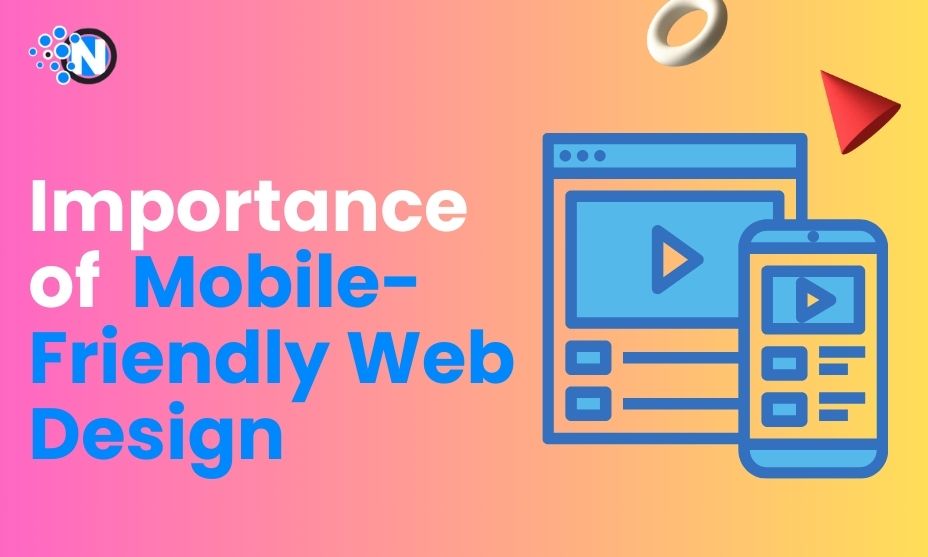Why Mobile-Friendly Web Design Is Essential For All Modern Businesses

You may be asking yourself, does my business need a mobile-friendly website? You’ve spent some time researching different web design agencies or website builders, and they all add an extra fee for mobile-friendly designs. It makes sense as this will require some extra work and coding, but you’re wondering if it’s worth it.
Can you get away with not having a mobile-friendly site in 2023? If you’re looking for a short answer, then it’s a colossal no. Mobile-responsive web design is critical for businesses of all sizes. Every company should have a website to create an online presence – regardless of what you do. At the same time, a mobile website is needed. It’s not a fancy expense; it’s essential – and here’s why:

Google will Penalize Non-mobile Websites
When someone searches for a business on a desktop computer, they’re presented with a different set of search results than a person using a mobile device. Google has created mobile searches to suit the user, meaning it displays mobile-friendly websites.
Consequently, if your site is not “mobile-friendly” it could be penalized. Reports show that Google doesn’t like non-mobile sites and will rank them lower than mobile-friendly ones. Google wants to show the best sites to its users offering the best user experiences, and if someone on a mobile device lands on a non-responsive site, they are not going to have a good experience.
Fundamentally, not having a mobile website design will damage your ability to drive mobile traffic to your site. Your argument to this may be “Okay, but what if I don’t get a lot of mobile traffic?” In this instance, we refer you to the next point.
Improved User Experience
Mobile-responsive web design creates a tailored and user-centric experience for mobile visitors. It involves optimizing the layout, fonts, images, and navigation to suit smaller screens and touch interfaces. A well-designed mobile site ensures that users can easily access your content, read text without zooming in, and seamlessly interact with your website’s features.
Improved user experience tend to increased engagement, longer page visits, and increased chances of conversion. Users who find your site easy to navigate and visually appealing on their mobile devices are more likely to stay and explore further.
Mobile Searches are Rising Every Year
As the world enters the era of digital, mobile searches are swiftly becoming the primary mode of web searches. And, increasingly, users don’t want to search from their desktops — they search from their phones. And when you gaze upon the world at large, no surprise here.
Most of your customers will eventually use mobile devices to search, because we’ve become screen junkies. The data is also supportive, according to Statista mobile results get greater than half of organic search engine visits in the United States. The number has grown in the past ten years and it still will grow.
What does this mean for your business? You’re potentially missing out on over half of your organic web traffic by not having a mobile-friendly website. There is a chance people may still find your site via mobile searches, but it will be hard. Especially if your closest search competitors all have mobile-friendly sites, the chances are your rivals will bog you down and won’t be seen.

Improved User Experience
Mobile-responsive web design focuses on creating a tailored and user-centric experience for mobile visitors. It involves optimizing the layout, fonts, images, and navigation to suit smaller screens and touch interfaces. A well-designed mobile site ensures that users can easily access your content, read text without zooming in, and seamlessly interact with your website’s features.
Read Also: How To Make A Business Website? Step-By-Step Guide
This improved user experience translates to increased engagement, longer page visits, and higher chances of conversion. Users who find your site easy to navigate and visually appealing on their mobile devices are more likely to stay and explore further.
Lower Bounce Rates
A non-mobile-friendly website can lead to high bounce rates among mobile users. Visitors who encounter distorted layouts, unreadable text, or cumbersome navigation on their smartphones are more likely to abandon your site quickly. A high bounce rate is detrimental to user experience and sends negative signals to search engines, potentially harming your site’s search rankings.
Mobile-friendly design reduces bounce rates by ensuring that your site adapts seamlessly to various screen sizes and resolutions. This adaptability keeps visitors engaged and encourages them to explore your content further.
Increased Conversions
For businesses focused on online sales, lead generation, or user engagement, a mobile-friendly website is crucial for converting visitors into customers. Mobile-optimized designs simplify the process of completing actions like making purchases, filling out contact forms, or signing up for newsletters on smaller screens.
When potential customers can easily navigate your site and perform desired actions without friction, conversion rates tend to rise. Mobile-friendly web design directly contributes to the success of your online sales and marketing efforts.
Competitive Advantage
In today’s fiercely competitive digital landscape, setting yourself apart from competitors is essential. A mobile-friendly website demonstrates your commitment to providing an exceptional user experience for all visitors, regardless of their device. It showcases your adaptability and willingness to stay ahead in the fast-evolving digital world.
If your competitors have not yet embraced mobile-friendly design, it gives you a significant edge. Users are more likely to choose a business with a mobile-optimized website over one that hasn’t kept up with this essential trend.
Social Media Compatibility
Social media is a powerful marketing tool; many users access social platforms through mobile devices. When users click on links to your website from social media, a mobile-friendly design ensures a seamless transition. Consistency between your social media presence and your website enhances user engagement and conversion rates.
Faster Page Loading Speed
Mobile-friendly websites are optimized for speed, a critical factor for retaining mobile visitors. Slow-loading websites frustrate users and can lead to higher bounce rates. A delay of just a few seconds can deter users from exploring your site further. Mobile-optimized designs prioritize quick loading times on mobile connections, providing a smoother and more enjoyable browsing experience.
Conclusion
These days, mobile-friendly web design is not just a trend but an essential strategy for businesses of all sizes. It improves user experience, search engine rankings, and the overall online presence of your business to boost bottom line.
Investing in a responsive and mobile-optimized website shows your commitment to delivering an exceptional user experience to all your customers, regardless of their chosen device.




